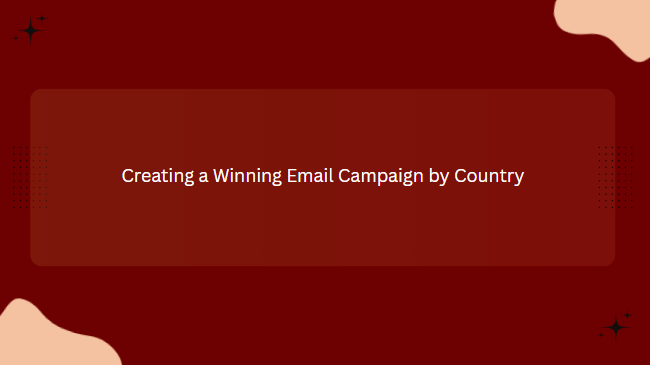Crafting Country-Specific Content and Design
One of the most critical steps in creating a winning email campaign is tailoring both the message and the design to fit the preferences of your audience in a specific country. While the core offer or product may remain the same, the way you present it should adapt to local tastes. This includes translating content accurately—not just word-for-word, but with country wise email marketing list an understanding of idioms, slang, and local expressions that resonate with native speakers. A professional translation combined with localization ensures your email avoids awkward phrasing or misinterpretations. Beyond language, the design must also reflect local aesthetics. For example, countries with slower internet speeds may prefer simpler, lighter email designs, while highly digital-savvy audiences may enjoy rich visuals, animations, and interactive features. The structure of your email matters as well—some cultures prefer direct, concise communication, while others value detailed explanations and storytelling. Additionally, local laws, such as GDPR in the EU or CAN-SPAM in the U.S., dictate how subscriber consent and data usage should be handled, making compliance not just a legal requirement but a trust-building factor. By balancing global branding consistency with localized creativity, you can ensure your message strikes the right chord in every market.

Timing and Frequency for Optimal Engagement
The success of an email campaign by country is often determined by when and how often you send your messages. Time zones are an obvious consideration, but beyond that, local routines, work schedules, and cultural habits significantly influence open rates and click-throughs. For instance, sending an email at 9 AM in one country might be ideal for professionals checking their inbox before starting work, while in another, a late-evening send time might align better with consumer behavior. Weekend engagement also varies—some countries see high activity on Saturdays and Sundays, while others have a mid-week peak. Frequency plays an equally important role; overly frequent emails can lead to fatigue and unsubscribes, while too few touchpoints may cause audiences to forget about your brand. The ideal balance can differ widely by region—what works in fast-paced, promotion-heavy markets like the U.S. may feel excessive in countries where consumers value less intrusive marketing. Tracking local open and engagement data is crucial for fine-tuning your schedule. Automation tools with segmentation capabilities can help you manage different time zones and schedules without overwhelming your marketing team, ensuring that every email arrives at the right moment for maximum impact.
Leveraging Local Influences and Trends
A winning email campaign should not only speak to the audience’s needs but also integrate elements of what’s trending in their specific country. Staying updated on local news, entertainment, sports, and social media conversations allows you to craft content that feels fresh and in sync with the cultural moment. For example, referencing a national sports event in Brazil or a popular television show in the UK can make your emails feel more connected to the recipient’s everyday life. Partnering with local influencers can also amplify your message, as audiences are more likely to trust recommendations from personalities they recognize and admire. Influencers can contribute quotes, testimonials, or even co-branded content that adds a layer of authenticity to your campaign. Additionally, aligning your promotions with national holidays, cultural celebrations, and peak shopping seasons—such as Singles’ Day in China or Diwali in India—can dramatically increase relevance and conversion rates. However, sensitivity is key; you must ensure your content respects the significance of these events rather than appearing opportunistic. By weaving local culture into your campaigns, you create emails that feel less like generic advertisements and more like relevant conversations.
Measuring Success and Continuously Improving
No matter how well-crafted your campaign is, its long-term success depends on careful measurement, analysis, and improvement. Tracking performance metrics—such as open rates, click-through rates, conversion rates, and unsubscribe trends—on a country-by-country basis allows you to identify what’s working and where adjustments are needed. A campaign that generates high engagement in one country may underperform elsewhere, and understanding the reasons behind these differences is essential for optimization. A/B testing can help fine-tune subject lines, calls to action, visuals, and even the length of your emails to suit local preferences. It’s equally important to gather qualitative feedback, either through surveys or by monitoring customer responses, to gain insights that raw data may not reveal. Over time, this data-driven approach allows you to create a feedback loop where each campaign builds upon the lessons of the last. In rapidly changing markets, consumer expectations evolve quickly, so flexibility and adaptability are crucial. By committing to ongoing analysis and refinement, you ensure that your email marketing remains competitive, culturally relevant, and consistently impactful in every country you target.